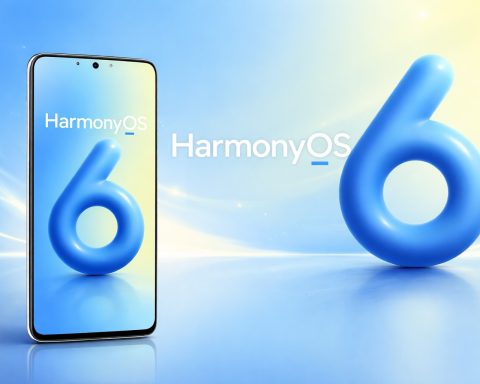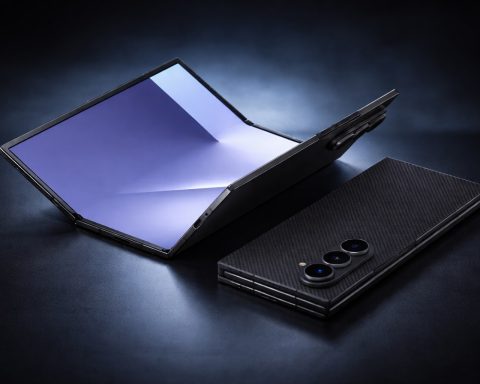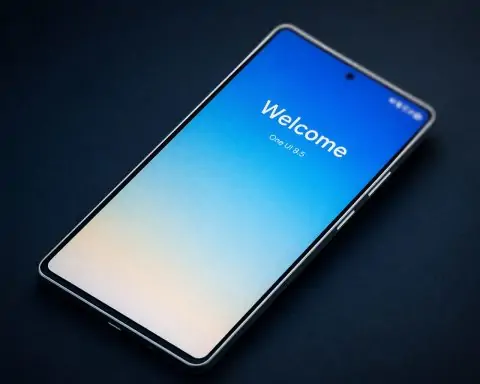- India’s 5G spectrum showdown: Global industry group GSMA urged India’s government to keep 5G airwaves with mobile carriers (not enterprises), arguing private 5G spectrum set-asides show “no measurable benefit” and would undermine public networks [1].
- Bangladesh enters 5G era: The nation’s top two operators (Robi Axiata and Grameenphone) launched limited 5G services in major cities, promising ultra-fast internet and IoT-ready connectivity [2] [3].
- Pakistan fast-tracks 5G auction: Prime Minister Shehbaz Sharif approved a long-delayed 5G spectrum auction to be completed by Dec 2025, freeing up 606 MHz for new networks (including 154 MHz under litigation) [4] [5].
- Iraq’s 5G operator debut: Iraq officially launched a new national mobile company (with Vodafone as a partner) to roll out 5G across the country in 2025 – a state-backed venture to boost digital services and competition [6] [7].
- U.S. spectrum shake-up: A “Big Beautiful Bill” restored the FCC’s auction authority through 2034, but excluded coveted 5G/6G bands (3.1–3.45 GHz, 7.4–8.4 GHz). Instead, it orders study of other frequencies and auction of 100 MHz around 4 GHz [8]. Industry analysts call the impact a mixed bag – more hardware will be needed, but the number of cell sites might be lower [9].
- Europe’s 5G tech leaps: Vodafone Germany became the first in the country to offer commercial 5G network slicing for businesses, delivering dedicated network “slices” with up to 80 Mb/s downlink on its 5G standalone network [10]. And in rail tech, Kontron teamed with Qualcomm to build a 5G FRMCS modem for next-gen European trains, using Snapdragon X72 chips to set a new benchmark for high-speed, secure railway communications [11].
- African network firsts: Vodacom South Africa deployed Africa’s first dual-band massive MIMO 5G radio (combining 3.5 GHz + 2.6 GHz in one unit) to boost 4G/5G capacity with lower energy and cost [12]. Rival MTN, with ZTE, announced the world’s first 5-band 5G radio unit, integrating all low/mid-band spectrum in one compact RRU – slashing tower hardware by 50% and cutting site power use ~42% via new amplifiers [13] [14].
- Telecom expansion & deals: India’s Indus Towers approved its first overseas foray into Africa – starting tower operations in Nigeria, Uganda, and Zambia to support Airtel’s networks [15]. Indus’s CEO said they are “well-positioned to differentiate” in Africa’s fast-growing market and become a preferred tower company [16]. And in a major wholesale deal, U.S.-based iBASIS agreed to acquire Telstra International’s wholesale mobile, voice, and messaging business, marking iBASIS’s entry into Australia/New Zealand [17]. The deal also hands iBASIS exclusive carriage of Digicel Pacific’s international voice traffic across island nations like PNG, Fiji, and Samoa [18].
- New networks break monopolies: Africa-focused operator Paratus launched Namibia’s first private mobile network, breaking a state monopoly by rolling out an all-4G LTE service [19]. (By contrast, neighboring South Africa plans to shut down legacy 2G and 3G networks by 2027 to free spectrum for 4G/5G – a move critics say could widen the digital divide [20].) Meanwhile, Bangladesh’s 5G launch on Sept 1 (noted above) ended its wait to join the 5G era, and Sweden revealed that 5G now reaches 99.9% of its population after a massive coverage expansion by Tele2/Telenor’s joint network [21], an achievement hailed as a “huge change” extending connectivity “from the mountains to [the] archipelago.”
Spectrum and Policy Shake-Ups
India’s private 5G debate: A high-stakes policy clash intensified in India over allocating 5G spectrum. In late August, the GSMA (global mobile operators’ alliance) sent a letter urging India’s DoT not to set aside dedicated 5G bands for private enterprise networks [22]. The GSMA’s APAC head, Jeanette Whyte, warned that India’s world-class public mobile networks are fully capable of serving industries, and that carving out prime mid-band spectrum for private 5G offers “no measurable benefit to enterprises, while significantly undermining public network performance” [23]. India’s operators and their lobby (COAI) echoed this stance, noting that a government demand survey for private 5G drew virtually no interest – a sign that an operator-led model may be more practical. The pressure is now on India’s regulators to keep mid-band 5G spectrum in carriers’ hands to avoid hobbling broader consumer coverage and affordability.
Pakistan’s 5G auction greenlight: In Islamabad, the government took a decisive step to advance mobile broadband. Prime Minister Shehbaz Sharif gave the go-ahead for a long-awaited 5G spectrum auction to be completed by December 2025 [24]. This comes after months of delays due to telecom mergers, litigation over certain bands, and economic woes. Officials told Pakistan’s Senate that 606 MHz of spectrum will be on offer – including 154 MHz currently tied up in court disputes [25]. Key mid-band frequencies (e.g. 2600 MHz and 3500 MHz) are targeted to improve 4G/5G quality [26]. Lawmakers pressed for transparency (even suggesting anti-corruption monitors oversee the process) given the stakes for Pakistan’s digital growth. They also raised alarm over market uncertainty – noting the possible exit of Telenor Pakistan and a mooted Telenor–Ufone merger – and urged that any consolidation be sorted out before the 5G auction. With an auction committee meeting set and consultants’ proposals in hand, Pakistan is racing the clock to launch 5G, viewing it as crucial for economic and social progress.
US restores FCC auction authority: In Washington, a notable telecom policy shift arrived via Congress. Lawmakers passed what’s been nicknamed the “One Big Beautiful Bill” Act, ending a two-year lapse in the FCC’s spectrum auction authority [27]. The legislation, signed in early September, renews the FCC’s power to license airwaves through 2034 and outlines America’s next spectrum frontiers. However, it pointedly omits some prime bands that industry players hoped to use for 5G/6G. The entire 3.1–3.45 GHz range – once eyed for 5G expansion – and the 7.4–8.4 GHz range – seen as a potential 6G pioneer band – were excluded from immediate auction plans [28]. Instead, Congress authorized only a 100 MHz auction in the ~4 GHz range (3.98–4.2 GHz) and called for further study of a few other mid-band slices [29]. This compromise disappointed some who wanted big new swaths for 5G, but it provides clarity. Telecom analysts at Mobile Experts note the outcome is a mixed bag: on one hand, U.S. operators will need to deploy more radios across various smaller bands (driving hardware investments), but on the other, the lack of large contiguous spectrum blocks could mean fewer new cell sites than previously anticipated [30]. In short, the bill kick-starts U.S. spectrum auctions again – crucial for 5G growth – but defers the toughest decisions (like the fate of lower 3 GHz) to another day.
New Network Rollouts and Expansions
Bangladesh’s first 5G services: Bangladesh leapt into the 5G era at the start of September. After years of preparation, the country’s top two mobile operators flipped the switch on limited 5G networks on September 1. Robi Axiata – the second-largest carrier – was first out of the gate, launching 5G in seven zones across Dhaka, Chattogram, and Sylhet [31]. Mere hours later, market leader Grameenphone followed suit, announcing via Facebook that it had activated 5G in all divisional cities [32]. (In reality, coverage is initially spotty – users in some “covered” cities couldn’t yet find a 5G signal – and the rollout will expand gradually [33].) Ultra-fast internet and low latency are the promise, enabling everything from IoT devices and smart city applications to AR/VR and next-gen healthcare [34]. Robi has plans to connect 200 towers by November [35], while regulators are urging operators to extend 5G beyond cities and avoid worsening the digital divide [36]. With this debut, Bangladesh joins its neighbors in offering 5G – a milestone that comes after spectrum auctions in 2022 and delays for ecosystem readiness. It’s a limited launch, but a significant first step for one of South Asia’s most populous nations.
Iraq’s 5G push via a new national operator: A big shake-up is underway in Iraq’s telecom sector. On September 3, Prime Minister Mohammed Al-Sudani announced the launch of the National Mobile Telecommunications Services Company, a new state-backed mobile operator that will deploy 5G services nationwide [37] [38]. This venture is remarkable for a few reasons: it’s the first time Iraq’s government has created a telecom company by bringing together three state institutions – the Ministry of Communications, the public pension fund, and a state-owned bank [39] [40]. It’s also partnered with Britain’s Vodafone Group, which has been selected to operate the network and bring its technical expertise [41]. The goal is to modernize Iraq’s mobile internet (serving ~47 million people) and diversify the economy beyond oil [42]. Al-Sudani hailed the 5G company as a “qualitative step” to enhance services and insisted on speeding up its rollout [43]. Notably, shares in the new operator will be open to citizens, giving Iraqis a chance to invest [44]. This launch also aligns with Iraq’s broader digital agenda – the government even met with SpaceX’s Starlink in May to explore satellite internet options [45]. By introducing a government-backed competitor alongside the existing private carriers, Iraq hopes to boost connectivity, drive down costs, and fuel innovation in sectors like education, health, and e-commerce.
Namibia’s private 4G entrant: In Namibia, a new mobile network just came online that challenges the long-standing state monopoly. Paratus Group, a pan-African telecom company, launched Namibia’s first privately owned mobile network on September 3 [46]. Until now, Namibia’s mobile market has been dominated by two state-run providers (MTC and Telecom Namibia) since the 1990s. Paratus is disrupting that by rolling out a 4G LTE-only network aimed at data-hungry users. “Launching Namibia’s first private mobile network is a deliberate step in our mission to transform Africa’s digital landscape,” said Paratus CEO Schalk Erasmus [47]. The company invested about N$1.42 billion (~USD 81 million) in the network and is targeting tech-savvy customers who want fast, convenient mobile broadband [48]. The all-4G strategy fits a regional trend: many African operators are trying to migrate users off older 2G/3G networks and onto 4G/5G. In fact, South Africa (Namibia’s neighbor) just confirmed plans for a total shutdown of 2G and 3G by end-2027 to free up spectrum for newer technologies [49]. Regulators there warn providers to manage this transition carefully so as not to leave behind low-income users dependent on basic phones [50]. In Namibia’s case, Paratus’ entry should spark competition for the roughly 3 million population – offering more choice and potentially better data prices in a market that MTC has led since 1994 [51]. It’s a notable development in Africa’s mobile landscape, showing how private capital is expanding connectivity alongside state operators.
Sweden achieves near-total 5G coverage: While some countries launch new networks, others are completing them. In Sweden, telecom partners Tele2 and Telenor announced a remarkable coverage milestone on Sept 3: their joint 5G network now reaches 99.9% of the population and 90% of the country’s land area [52]. This represents a giant leap from about 25% land coverage to 90% “in one step,” thanks to rapid deployment across rural areas [53]. Sweden’s geography – from remote northern mountains to thousands of coastal islands – makes this feat notable. “It means 5G is now available across our entire network in Sweden, from the mountains to the archipelago,” said Elin Ovéus, Tele2’s head of networks, calling it a “huge change” for nationwide connectivity [54]. The expansion was done via Net4Mobility (the Tele2–Telenor infrastructure joint venture) and lays a robust foundation for new services countrywide. As Sweden shows, 5G is not just an urban upgrade – it’s becoming a ubiquitous utility, ensuring even sparsely populated areas can access high-speed mobile internet. This near-universal 5G rollout in Sweden puts it among the front-runners globally for coverage and will likely spur innovative applications that leverage truly national wireless broadband.
Cutting-Edge Network Innovations
Network slicing goes live in Germany: A significant technical first in Europe arrived as Vodafone Germany unveiled the country’s first commercial 5G network slicing service for business customers. Announced on Sept 2, the new offering (branded “Campus Flex”) allows enterprise clients – from large organizations to SMEs – to get a dedicated virtual slice of Vodafone’s public 5G standalone network [55] [56]. This guarantees them specified bandwidth and performance, essentially carving out a private network experience over the public infrastructure. Two tiers are available: Campus Flex Exclusive provides up to 80 Mb/s downlink and 20 Mb/s uplink per slice for demanding applications (like industrial IoT, AR/VR, or mission-critical comms), while a lighter Campus Flex Starter offers ~1 Mb/s for use cases like wireless payment terminals at events [57]. The slices come as add-ons to business mobile plans and run on Vodafone’s 5G SA core, meaning they can leverage low-latency and reliability features unique to standalone 5G. Vodafone Germany touts this as making advanced 5G capabilities accessible to enterprises “at the push of a button,” without each needing to invest in private 5G infrastructure. It’s also a proof-point for 5G’s vaunted ability to support Industry 4.0: network slicing can tailor connectivity for different needs (from factory robots to live video streams) on the same network. With this launch, Germany joins a select few markets globally where 5G slicing is commercially available, indicating the tech’s maturation. Analysts will be watching uptake closely – if businesses embrace slices, it validates a key 5G differentiation beyond raw speed.
5G for smart railways – FRMCS breakthrough: In the realm of transportation, European suppliers are gearing up to replace aging railway communications (GSM-R) with 5G. This week, embedded systems firm Kontron announced a collaboration with Qualcomm to develop a next-gen 5G FRMCS modem for rail operators [58] [59]. FRMCS (Future Railway Mobile Communication System) is the future standard that will bring 5G connectivity to trains and rail infrastructure across Europe, enabling high-speed data, improved safety, and automation (like smarter signaling and possibly autonomous train operation). Kontron’s new modem will incorporate Qualcomm’s advanced Snapdragon X72 5G modem-RF system [60]. According to the announcement, this chipset provides “unparalleled performance, reliability and energy efficiency,” ideal for the strict needs of rail environments [61]. The modem (classified as a PC3 FRMCS device) will be ruggedized for trackside and onboard use, supporting the Morane 2 initiative (Europe’s rail communication modernization program) [62]. This development follows Nokia’s recent launch of an end-to-end 5G FRMCS solution, indicating that the industry is rapidly moving toward deploying 5G on trains. With 5G’s low latency and high bandwidth, FRMCS will allow real-time train control communications, CCTV streaming from trains, better information for passengers, and even connectivity for IoT sensors on critical rail assets. By aligning the new modem with EU-Rail’s timelines, Kontron (traditionally known for industrial computing) is positioning itself in a niche but high-growth telecom segment. It’s a reminder that 5G isn’t only about phones – it will also quietly upgrade the communications backbone of transport systems that millions rely on.
Dual-band 5G radios cut costs in Africa: A groundbreaking base station has been deployed in South Africa that could be a blueprint for cost-effective 5G in emerging markets. Vodacom South Africa revealed it has live-tested a dual-band massive MIMO 5G radio – the first of its kind in Africa [63] [64]. This advanced radio unit, installed in Cape Town, uniquely combines two spectrum bands (3.5 GHz 5G + 2.6 GHz LTE) into a single hardware unit [65]. Traditional cell sites would need separate radios for each band; Vodacom’s approach uses one unit to handle both 4G and 5G simultaneously. The benefits are significant: more efficient use of spectrum and power, a lower equipment footprint on towers, and reduced deployment and maintenance costs [66] [67]. In fact, by streamlining equipment, Vodacom can accelerate its 5G rollout while keeping energy consumption in check – a key consideration given rising electricity costs and sustainability goals. The dual-band massive MIMO (multiple-input, multiple-output) technology also improves user experience by beefing up capacity on both networks without adding new antennas. Vodacom says this marks the start of a “next wave of network modernization” focused on high performance with operational efficiency [68]. Such innovations are particularly valuable in Africa, where operators often face tight CAPEX budgets and must maximize existing spectrum. By integrating bands, they can do more with less – bringing 5G to more areas sooner, and supporting 4G users at the same time.
MTN and ZTE’s 5-in-1 radio unit: Not to be outdone, rival MTN South Africa and China’s ZTE announced a world-first commercial deployment of a 5-band Remote Radio Unit (RRU) in early September [69] [70]. This single ZTE-engineered radio packs all of MTN’s low- and mid-band FDD frequencies into one unit – covering bands from 900 MHz up through 2100 MHz and beyond. By consolidating five separate radios into one, MTN can drastically simplify its cell sites. The companies reported a 50% reduction in the number of RAN modules needed, a 23% cut in equipment weight, and 18% less wind load on towers [71] – meaning easier installation and potentially lower tower lease costs [72]. Impressively, the new RRU also incorporates ZTE’s advanced “Super-N” power amplifier architecture, which dynamically activates amplifiers only as needed [73]. This design achieved a 42.7% reduction in site power consumption and a 45.8% boost in energy efficiency (Wh per GB) during MTN’s deployment [74]. Such savings are hugely significant for operators: lower power draw not only cuts operating expenses but also supports greener network targets. MTN’s multi-band radio is deployed in the Western Cape region for now [75], but it signals where network hardware is headed. As 5G gets added on top of 2G/3G/4G, infrastructure like this avoids a tangle of radios on each tower. For Africa – and any market with space or power constraints – these integrated solutions could accelerate widespread 5G by making upgrades leaner and cheaper. The Vodacom and MTN breakthroughs highlight how innovation in base station design can expand coverage and capacity in a sustainable way, which is vital as data demand soars.
Market Moves and Telecom Business Updates
Indus Towers targets Africa: One of the world’s largest telecom tower companies, India’s Indus Towers, is going international. In a board meeting on Sept 2, Indus (which owns over 185,000 towers in India) approved a plan to expand into Africa for the first time [76]. The company identified Nigeria, Uganda, and Zambia as its initial target markets, leveraging the footprint of Bharti Airtel (Indus’s major shareholder) which operates mobile networks in those countries [77] [78]. Indus will provide tower infrastructure and related services, effectively becoming a new competitor to established African tower firms like IHS Towers and Helios. The move is part of Indus’s strategy to seek growth beyond a saturated Indian market – the firm had been conserving cash (even pausing shareholder dividends) to fund such expansion [79] [80]. “The Board’s approval to enter Africa unlocks our vision for long-term growth,” said Indus Towers CEO Prachur Sah, adding that with Indus’s expertise and scale, “we are well-positioned to differentiate ourselves in Africa’s fast-growing telecom market and emerge as the preferred tower company” [81]. Indus will initially anchor on Airtel Africa as its key client (Airtel has over 169 million subscribers across 14 African countries) [82], but it likely aims to win business from others over time. The entry is subject to regulatory nods in each nation [83]. For Africa, Indus’s arrival could mean more investment in tower builds and potentially improved mobile coverage, as competition heats up in the passive infrastructure space. It also reflects a broader trend of globalization among tower companies, chasing opportunities in high-growth regions as mobile data usage climbs.
iBASIS buys Telstra’s wholesale arm: In the telecom wholesale arena, a notable cross-continental acquisition was unveiled on Sept 3. U.S.-based communications provider iBASIS signed a deal to acquire a portfolio of assets from Australia’s Telstra Group, specifically Telstra International’s wholesale voice, mobile, and messaging customer contracts [84]. The transaction (financial terms undisclosed) is expected to close by late 2025 [85]. For iBASIS, which specializes in international voice and data transit, this is a strategic foothold in the Asia-Pacific. It will instantly establish iBASIS’s presence in Australia and New Zealand and expand its reach across Asian telecom markets [86]. Along with the customer base, iBASIS will obtain exclusive rights to handle international wholesale voice traffic for Digicel Pacific – a Telstra subsidiary serving Pacific Island nations (Papua New Guinea, Fiji, Samoa, etc.) [87]. That means iBASIS becomes the primary carrier for calls in and out of those islands, boosting connectivity into remote regions. Telstra, for its part, has been reorganizing to focus on its core domestic business and high-growth tech segments; shedding its international wholesale unit aligns with that strategy. The deal exemplifies consolidation in the global carrier-services market, as players like iBASIS scale up to offer end-to-end reach. Once completed, iBASIS will have a much enlarged APAC footprint, positioning it to serve multinationals and operators with seamless voice/SMS services across Oceania and Asia. It also illustrates how even traditional services like wholesale voice are still strategically important – especially when tied to emerging markets with growing telecom needs.
Other notes: These 48 hours saw other interesting tidbits in the GSM world. In Turkey, regulators made headlines by banning a concert of a famous French singer for political reasons [88], an unusual intersection of politics and telecom since the controversy was amplified on social media and messaging apps. In Canada (earlier in the week), Rogers Communications claimed a 5G-Advanced first by deploying RedCap (NR-Light) technology nationwide to support wearables and IoT devices on its 5G network [89]. And industry observers are buzzing about early 6G research – from integrated sensing (ISAC) opportunities highlighted by ABI Research [90] to spectrum plans in Europe and Asia that hint at how the 6G era might unfold. In sum, the first week of September 2025 has been remarkably eventful for mobile internet tech – with new networks lighting up, policies evolving, and companies repositioning for the future. Each development, from Dhaka to Düsseldorf to Dakar, underscores the rapid pace of connectivity growth and the ever-expanding role of mobile technology in economies and daily life worldwide.
Sources: Recent news reports and official releases were used to compile this roundup, including Reuters [91] [92], RCR Wireless [93], local news outlets (e.g. The Daily Star in Bangladesh [94]), industry publications (TelecomTV [95], SDxCentral [96]), and press statements. Each claim is backed by a cited source for verification. This comprehensive summary provides a global snapshot of the GSM-based mobile internet landscape during September 3–4, 2025 – two days rich with milestones shaping the present and future of 2G, 3G, 4G/LTE, and 5G networks around the world.
References
1. www.rcrwireless.com, 2. www.thedailystar.net, 3. www.thedailystar.net, 4. www.brecorder.com, 5. www.brecorder.com, 6. meatechwatch.com, 7. meatechwatch.com, 8. www.prnewswire.com, 9. www.prnewswire.com, 10. www.sdxcentral.com, 11. www.telecomtv.com, 12. meatechwatch.com, 13. meatechwatch.com, 14. meatechwatch.com, 15. www.businesstoday.in, 16. www.businesstoday.in, 17. www.reuters.com, 18. www.reuters.com, 19. www.reuters.com, 20. www.reuters.com, 21. www.telecomtv.com, 22. www.rcrwireless.com, 23. www.rcrwireless.com, 24. www.brecorder.com, 25. www.brecorder.com, 26. www.brecorder.com, 27. www.prnewswire.com, 28. www.prnewswire.com, 29. www.prnewswire.com, 30. www.prnewswire.com, 31. www.thedailystar.net, 32. www.thedailystar.net, 33. www.thedailystar.net, 34. www.thedailystar.net, 35. www.thedailystar.net, 36. www.thedailystar.net, 37. meatechwatch.com, 38. meatechwatch.com, 39. www.iina.news, 40. www.iina.news, 41. meatechwatch.com, 42. meatechwatch.com, 43. meatechwatch.com, 44. meatechwatch.com, 45. meatechwatch.com, 46. www.reuters.com, 47. www.reuters.com, 48. www.reuters.com, 49. www.reuters.com, 50. www.reuters.com, 51. www.reuters.com, 52. www.telecomtv.com, 53. www.telecomtv.com, 54. www.telecomtv.com, 55. www.sdxcentral.com, 56. www.sdxcentral.com, 57. www.sdxcentral.com, 58. www.telecomtv.com, 59. www.telecomtv.com, 60. www.telecomtv.com, 61. www.telecomtv.com, 62. www.telecomtv.com, 63. meatechwatch.com, 64. meatechwatch.com, 65. meatechwatch.com, 66. meatechwatch.com, 67. meatechwatch.com, 68. meatechwatch.com, 69. meatechwatch.com, 70. meatechwatch.com, 71. meatechwatch.com, 72. meatechwatch.com, 73. meatechwatch.com, 74. meatechwatch.com, 75. meatechwatch.com, 76. www.businesstoday.in, 77. m.economictimes.com, 78. www.businesstoday.in, 79. www.businesstoday.in, 80. www.businesstoday.in, 81. www.businesstoday.in, 82. www.businesstoday.in, 83. www.businesstoday.in, 84. www.reuters.com, 85. www.reuters.com, 86. www.reuters.com, 87. www.reuters.com, 88. www.reuters.com, 89. www.mobileworldlive.com, 90. www.telecomtv.com, 91. www.reuters.com, 92. www.reuters.com, 93. www.rcrwireless.com, 94. www.thedailystar.net, 95. www.telecomtv.com, 96. www.sdxcentral.com





